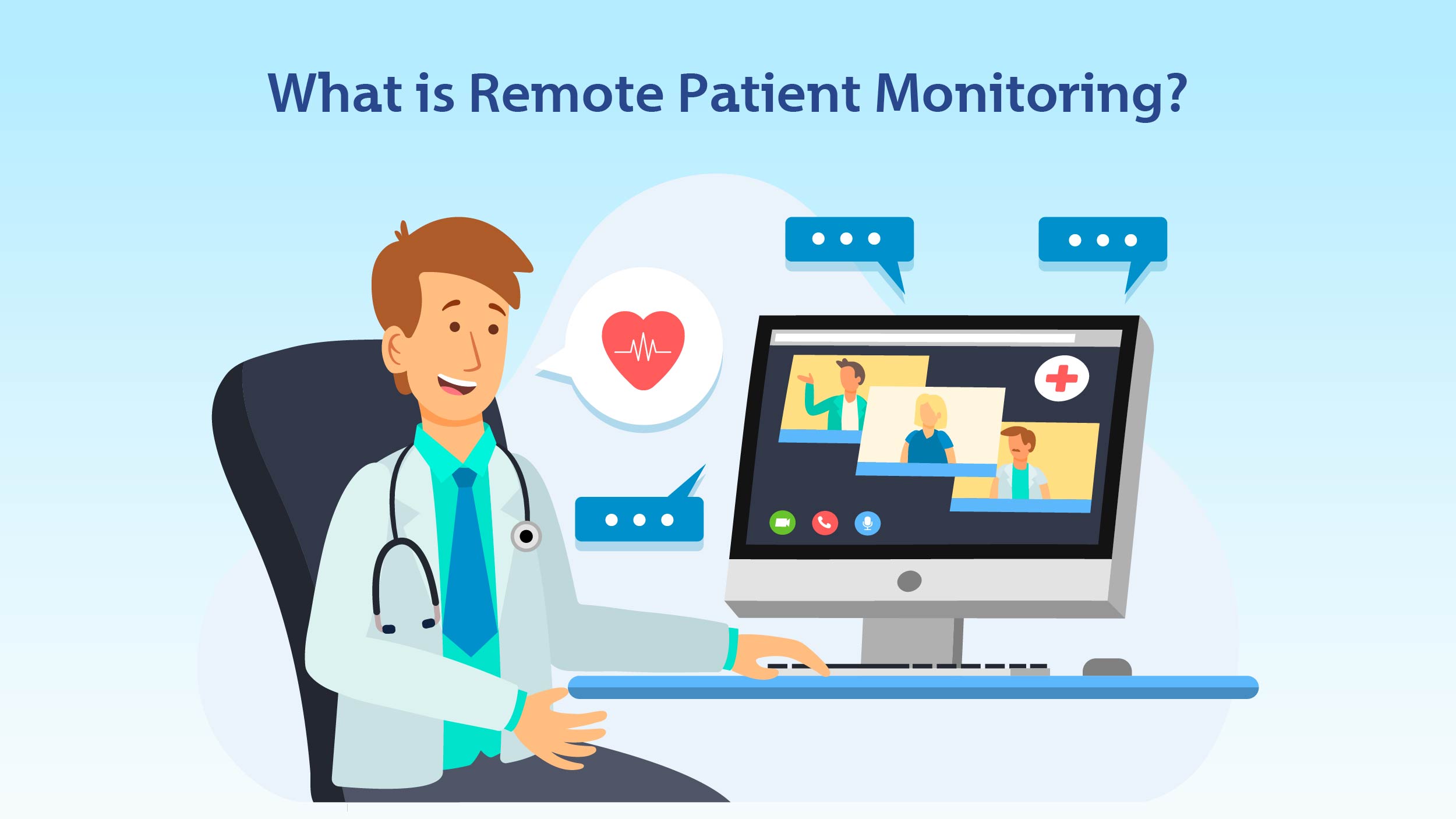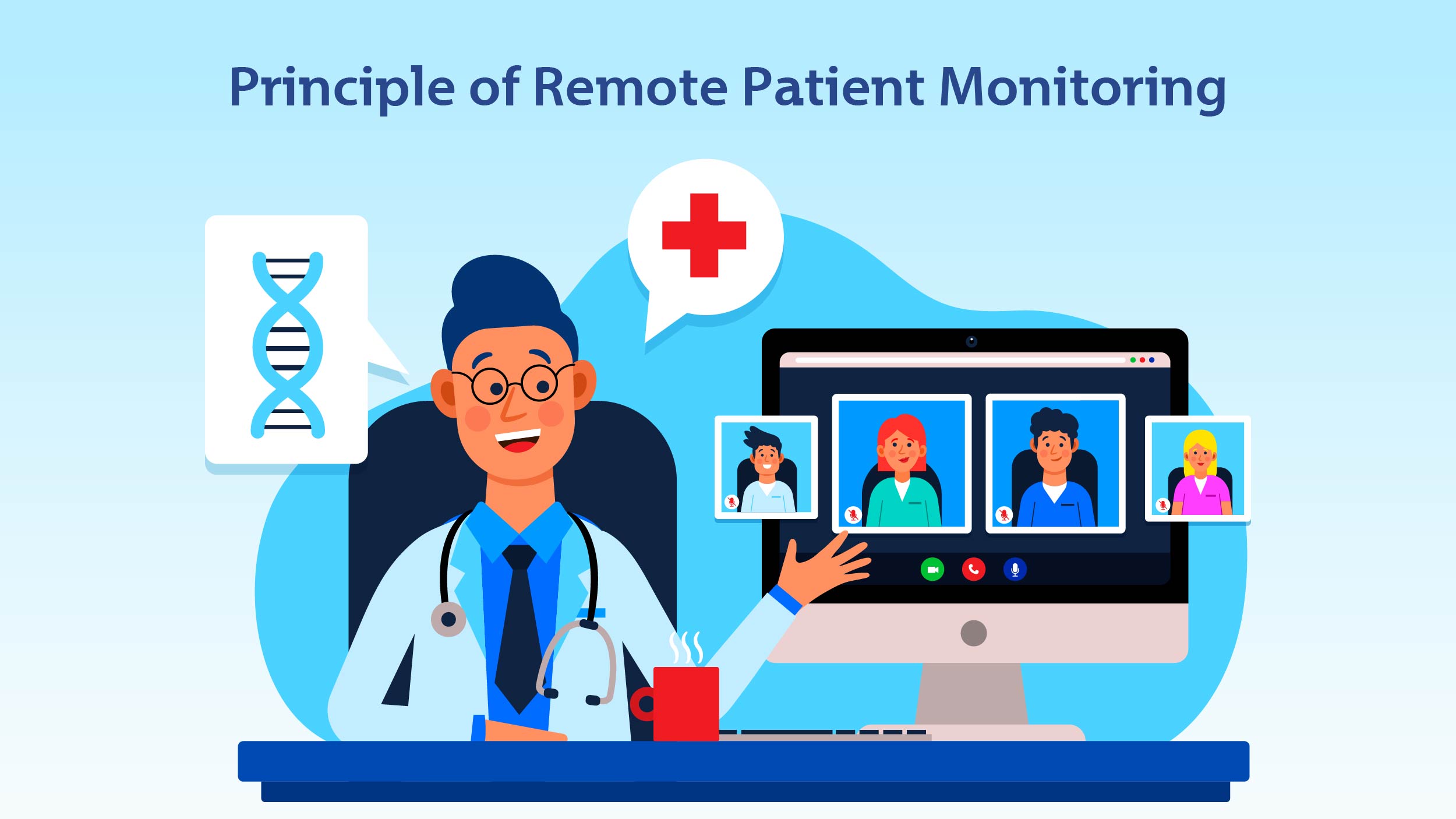Commencing a medical intervention marks only the initial phase of the journey toward well-being. Beyond the initiation of treatment lies the crucial aspect of patient care, monitoring the body’s response to the prescribed regimen, and facilitating a successful recovery. Yet, numerous patients face challenges in consistently tracking their progress on a daily basis. While visible improvements in health signify recovery milestones, the absence of quantitative measurements often leaves a gap in understanding the nuanced dynamics of healing. This is where the pivotal role of remote patient monitoring (RPM) becomes evident.
RPM acts as a transformative tool in healthcare, ushering in the era of precision medicine. Let’s have a quick look at this technology in this blog.
What is Remote Patient Monitoring?
 A subset of homecare telehealth called remote patient monitoring (RPM) enables patients to use mobile medical equipment and technology to collect and transmit patient-generated health data (PGHD) to healthcare providers. RPM programs can be used to gather common physiological information such as vital signs, weight, blood pressure, and heart rate. Once it has been gathered, patient data is transmitted to a doctor’s office using a specialized telehealth computer device or software program that can be downloaded and installed on a desktop, smartphone, or iPad.
A subset of homecare telehealth called remote patient monitoring (RPM) enables patients to use mobile medical equipment and technology to collect and transmit patient-generated health data (PGHD) to healthcare providers. RPM programs can be used to gather common physiological information such as vital signs, weight, blood pressure, and heart rate. Once it has been gathered, patient data is transmitted to a doctor’s office using a specialized telehealth computer device or software program that can be downloaded and installed on a desktop, smartphone, or iPad.
Patients who require chronic, post-discharge, or geriatric care typically benefit from RPM. It can alert healthcare companies about potential health risks or keep tabs on patient information between visits by keeping high-risk patients in touch with remote monitoring. RPM may also be used by organizations that want to keep track of workers’ compensation claims in order to ensure that workers are returning to work in the proper manner.
Principle of Remote Patient Monitoring
 RPM enables practitioners to monitor patients between clinic visits or in situations when in-person therapy is impractical by treating both chronic and acute diseases.
RPM enables practitioners to monitor patients between clinic visits or in situations when in-person therapy is impractical by treating both chronic and acute diseases.
RPM allows clinicians to monitor patients almost in real-time, gather the required data, and implement adjustments to improve care outcomes, which is especially useful for chronic care. Patients who require ongoing care, such as those with diabetes, heart issues, asthma, hypertension, mental disease, and, more recently, protracted COVID-19, or the symptoms that persist after COVID-19 infection and recovery, can benefit from this kind of continual tracking.
Patient remote monitoring programs use a variety of equipment, including scales for weight, pulse oximeters, blood glucose meters, blood pressure monitors, heart monitors, and even specific monitors for Alzheimer’s and Parkinson’s disease.
Wearables are a different class of remote patient monitoring devices that can be used to monitor patients’ health over time. They may include more streamlined consumer electronics like smartwatches or continuous blood glucose monitors.
Deloitte estimates that 320 million customer wellness and fitness trackers will ship globally in 2022, indicating that wearables, and remote patient monitoring devices, in particular, are in high demand. By 2024, that number might increase to 440 million units shipped.
However remote patient management can also be used to treat more urgent and acute disorders, making it effective for controlling long-term illnesses as well.
How Does RPM Work and What are RPM Devices?
With remote patient monitoring a patient’s health is monitored outside a typical clinical setting most probably in the comfort of their home. It is a healthcare delivery method that makes use of technology to track and monitor a patient’s health. RPM uses a specific technology to digitally transmit data between a patient and the physician.
RPM is primarily a medical solution in the form of wearable technology. Remote patient monitoring devices are digitally powered connecting bridges to share information between patients and providers. With this wearable technology, patients monitor themselves and collect data about their health at different times of the day. This data is then electronically transmitted as messages to their physicians or technicians.
Remote patient monitoring devices observe, report, and analyze a patient’s overall condition. With RPM devices a patient need not be under a doctor’s physical observation, technology does the job for them. RPM devices make it possible for healthcare professionals to monitor their patient’s health in real time. Some common examples of RPM devices are Blood pressure monitors, Continuous Glucose monitors, ECG devices, Medication monitoring, Clinical grade wearables, etc.
Advantages of Remote Patient Monitoring
- Improved patient involvement: RPM devices give people the opportunity to take an active part in understanding and managing their own medical issues.
- RPM makes it possible for patients and healthcare professionals to access more pertinent patient data, resulting in improved general performance and value-based care.
- Healthcare practitioners are able to serve more patients since RPM enables patients to perform simple health checks on their own.
- Greater levels of guidance and assistance: RPM educates and supports patients every day by offering data and feedback about their individual situations.
- Continuous monitoring can give patients peace of mind by ensuring that any possible problems are found quickly.
Difference Between Remote Patient Monitoring and Telehealth
Both Telehealth and RPM require technology and internet connectivity but some minor differences set them apart. Telehealth is a broader concept and covers the entire healthcare industry. It involves providing healthcare facilities by using the latest technologies. Whereas RPM uses specific technology to monitor a patient at home and generate interaction between patients and physicians.
How Companies Are Using AI to Provide Remote Patient Monitoring?
The chat-based tools from GYANT use AI to compile and examine patient medical histories as well as to guide patients through the ever-more complex healthcare options available today. After a short period of time, users can receive a disposition, advice on how to take care of themselves, or recommendations for the best care facility.
A patient’s healthcare experience is made surprisingly enjoyable by GYANT’s unmatched user experience. The average customer rating for GYANT is 4.9 stars, and 85% of customers say they would use the service again, with re-engagement rates at 70%. 94% of patients who start a session with GYANT stick with it to the end.
Other prominent companies such as Medopad, integrate genomic data to provide comprehensible information.
Final Thoughts
Remote patient monitoring is emerging as a beacon of innovation in healthcare, bridging the gap between treatment initiation and holistic recovery. By providing real-time insights into patients’ well-being and fostering a personalized approach through data-driven precision medicine, RPM not only enhances the efficiency of healthcare delivery but also empowers individuals to actively participate in their own health journeys. As technology continues to advance, the landscape of RPM holds the promise of further revolutionizing patient care, ultimately contributing to a more interconnected and responsive healthcare ecosystem
































